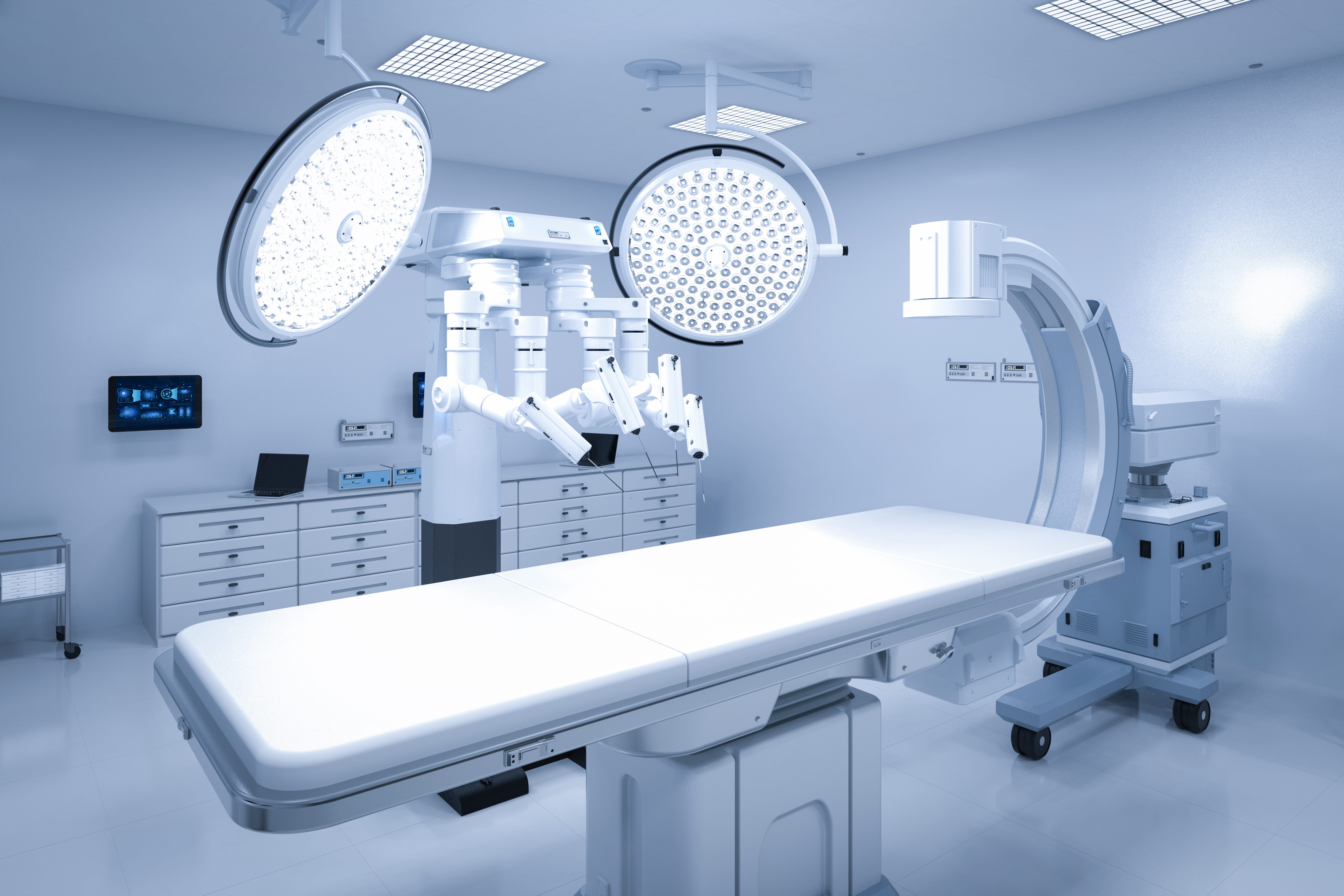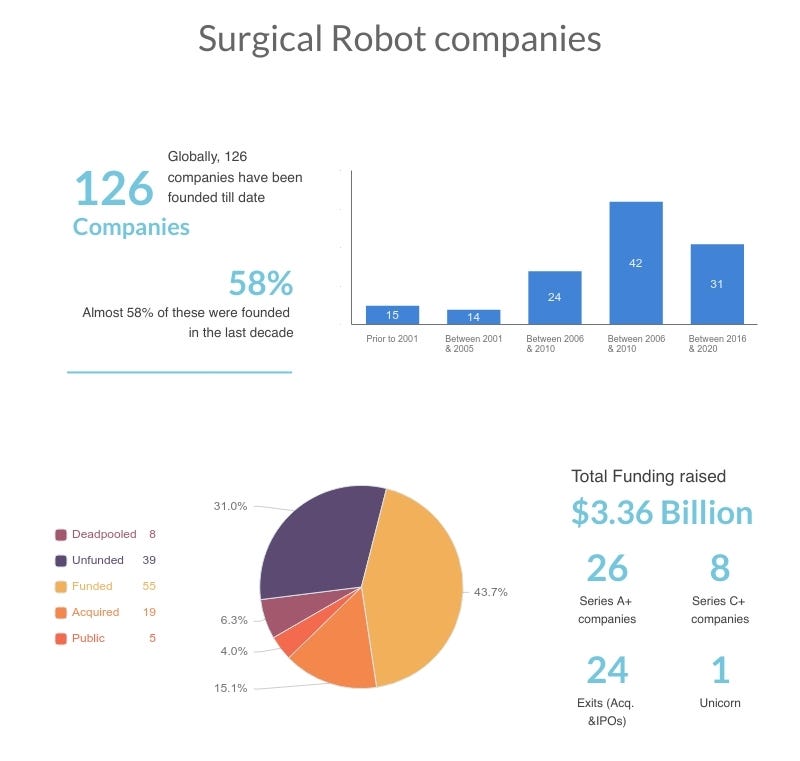Future of Guided Surgeries: The Robot Will See You Now

Image by Phonlamai Photo on Shutterstock
Backed by billions of dollars globally, the advancement in surgical robots has come a long way [1]. Technologies such as Artificial Intelligence, Robotics, Augmented and Virtual Reality, together create an immense opportunity to improve the efficiency and turnaround time of any surgical procedure. With a lot of room for further technological innovation in this sector, there are multiple projects that are either at a Proof of Concept stage or being prototyped, which are Next-gen Surgical Platforms in true sense. ‘The Robot Will See You Now’ — isn’t just something that one would expect to hear while watching a sci-fi movie, but has actually become a reality.
At IIMA Ventures, we have partnered with multiple deep-tech startups that are unlocking massive value using robotics as a core technological innovation. Cnlr Cybernetics, for example, is a visual object intelligence platform that enables industrial robotic arms to see, understand and manipulate any object in random unstructured environments. Similarly, Unbox Robotics is building software-defined robotics platforms to enable logistics players to automate and radically improve their operations on-demand in a limited footprint and capital. Our recent investment in Comofi Medtech adds to our thesis that robotic automation across various industries, including healthcare, is eventually going to be the new normal.
History of Surgical Robots
The history of robotic surgery is almost a couple of decades old with the first procedure being a delicate neurosurgical biopsy, a non-laparoscopic surgery, conducted using PUMA 560 robotic surgical arm. The procedure was previously subject to error from hand tremors during needle placement. Later in 2000, Intuitive Surgical’s da Vinci became the first robotic assisted surgery system to be cleared for general laparoscopic surgery. The robotic systems allow for a successful surgery due to greater precision when used in minimally invasive surgeries, such as laparoscopies which typically utilize flexible fiber optic cameras [2].
The da Vinci robotic surgery system’s three-dimensional magnification screen allows the surgeon to view the operative area with the clarity of high resolution. The one-centimeter diameter surgical arms represented a significant advancement in robotic surgery from the early, large-armed systems such as the PUMA 560 [3]. The other notable advantages of robotic surgeries include smaller incisions, less patient trauma, higher surgical accuracy, reduced surgeon fatigue, enhanced visualization, improved access to hard-to-reach areas and improved dexterity.
Need for democratisation of Surgical Robots
Globally, there have been almost 6,000–6,500 robotic surgical systems installed in the last two decades with almost 5,500 units alone being Da Vinci robots. Out of 40,000 plus hospitals in India, currently, there are less than 70–75 hospitals that have installed robotic surgery units. Da Vinci robots sell at almost Rs 15 — Rs 17 crore per unit with so far only 70–80 robotic units being deployed in India.[4]
The corporate hospital chains like Apollo Hospitals, Fortis Healthcare, Max Healthcare have been the early adopters of the surgical robots while the others have resisted the usage of these devices owing to high capital cost involved. In semi-urban and rural India, the operation rooms are relatively smaller and the price per surgery has been capped depending on the category of the hospital. This creates an opportunity for disruption in the sector by building portable and cost-effective surgical platforms.
Investing in Comofi Medtech
Comofi Medtech is a Next Generation HealthCare Robotics Company that has designed and developed an intervention platform, nGuideTM, to improve surgical efficiency and outcome. nGuideTM is a platform technology with modular architecture on which multiple applications could be developed keeping ~80–90% of the system the same. For any new applications developed on the platform, it will only require a suitable end effector and a software update.
The first application of the nGuideTM system is for PCNL (Percutaneous nephrolithotomy) which is a prefered treatment for the management of kidney stones that are ≥2 cm in diameter. Instead of manually puncturing, the robotic arm accurately punctures the kidney and provides an access to the surgeon, as per the required depth.
The startup has been founded by an experienced team with an end to end exposure in R&D, designing and product development of medical devices, along with experience in clinical operations, compliance and regulatory areas.
Dr. Raghunath, who leads clinical operations at Comofi Medtech has more than 15 years of experience in urology, uro-oncology with interest in robotic surgery and smart connected healthcare devices.
Global Market Trends
While Intuitive Surgical continues to be the market leader in the sector, the incumbents are also entering the market either through acquisitions or organically. Some of the recent developments are as follows:
- Intuitive recently launched $100M venture fund — Intuitive Ventures
- Medtronic recently released Hugo Robotic Assisted Surgical System
- Johnson & Johnson has acquired robotics specialists Auris Health

From Tele-Robotics to Autonomous Surgeries
Once robotic devices become commonplace and reliable, surgery will no longer have to take place at a hospital, which means that far more people will have access to it — especially those in remote or impoverished areas. There will be dozens of kinds of surgical robots, and many will tackle specific jobs, from suturing in the abdomen to setting a broken leg. The over-all surgical plan will be generated by a computer, crunching data from the patients’ tests and previous similar surgeries. An A.I. algorithm will recommend a treatment regimen while the surgeon will oversee but not perform the actual operation.
According to an Industry report, in 2018, the global image guided and robot assisted surgery market size was US$ 2.56 bn and it is expected to reach US$ 6.34 bn by the end of 2025, rising at a CAGR of 13.91% during 2019–2025. At CIIE.CO, we’re actively looking to back next-gen robotic-assisted platforms that are more Compact, Flexible, and Cost-Effective and are built while leveraging cutting-edge technologies to allow for enhanced pre-operative planning, intraoperative guidance, and, ultimately, better patient outcomes.
References:
[1] Robotic Surgery (Surgical Robots), Tracxn
[2] and [3] History and the future of Robotic Surgery, Robotic Oncology, David B. Samadi M.D.
[4] India’s first general robotic surgery system to hit markets in 4-6 months, Business Today
